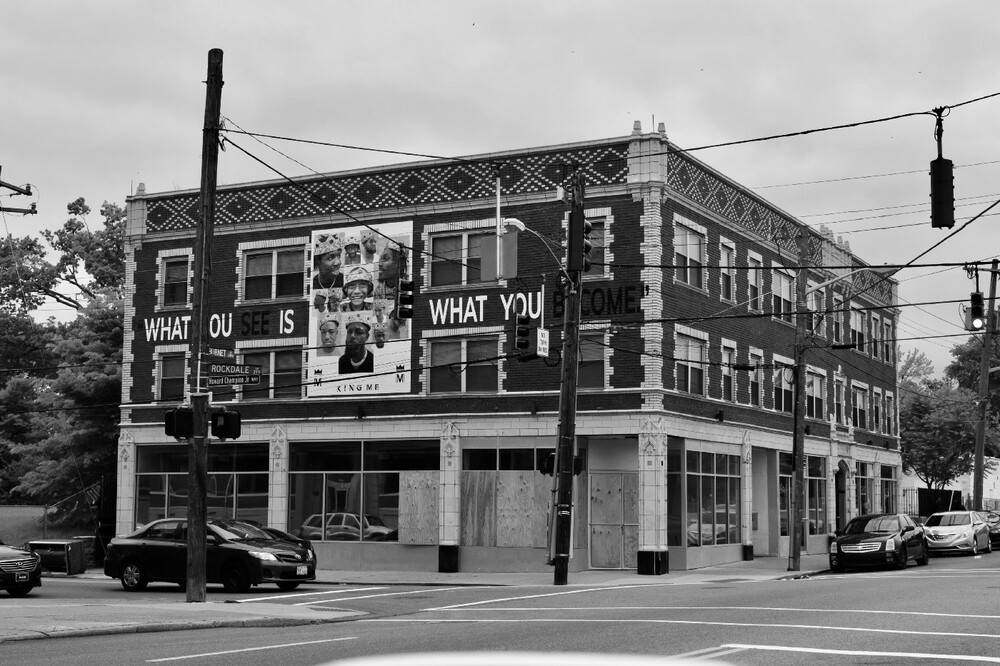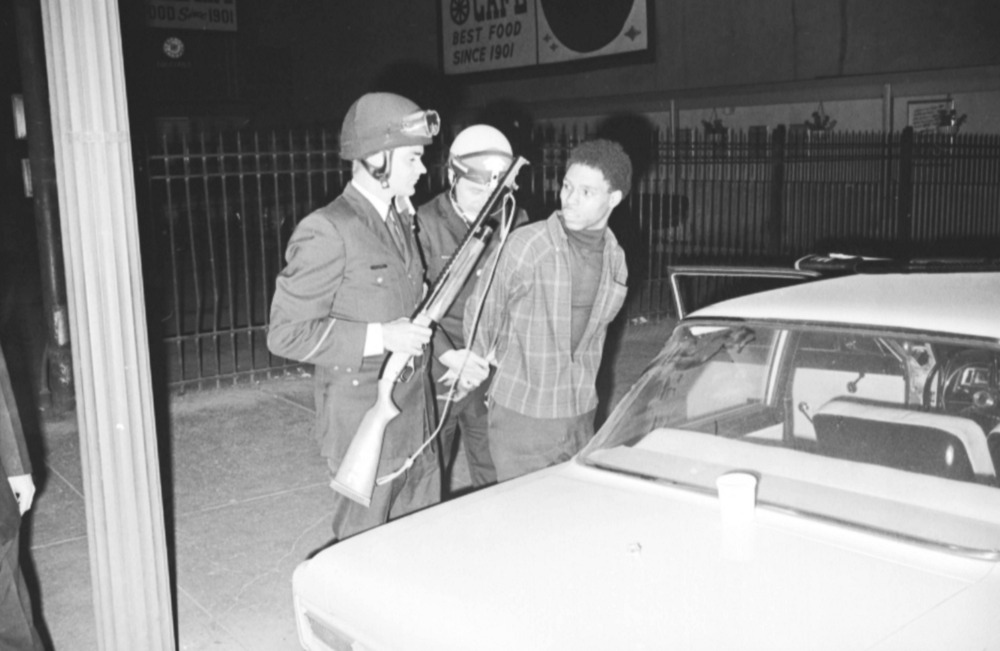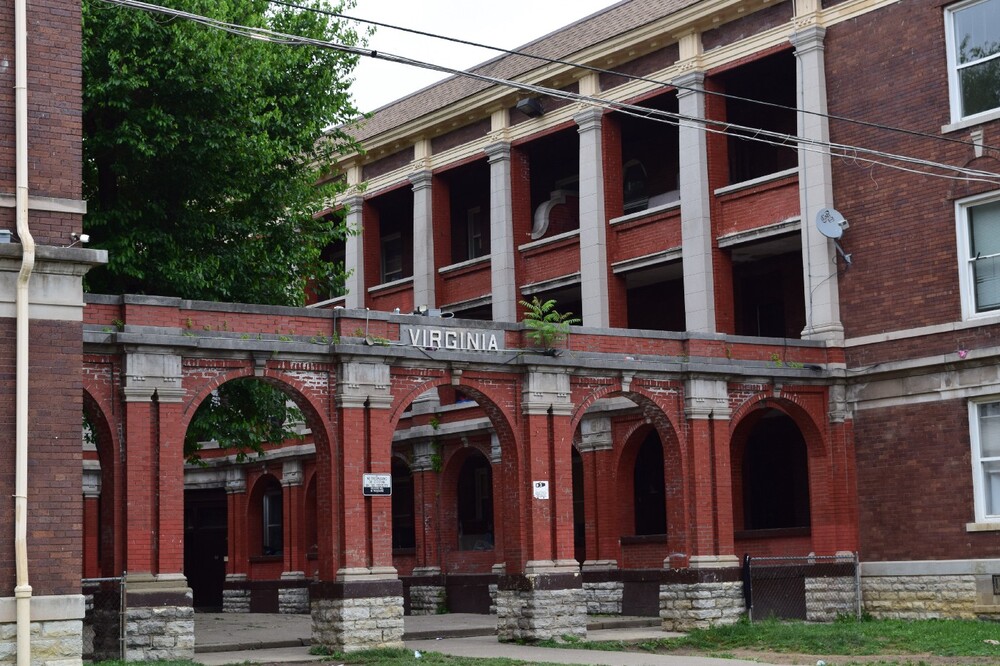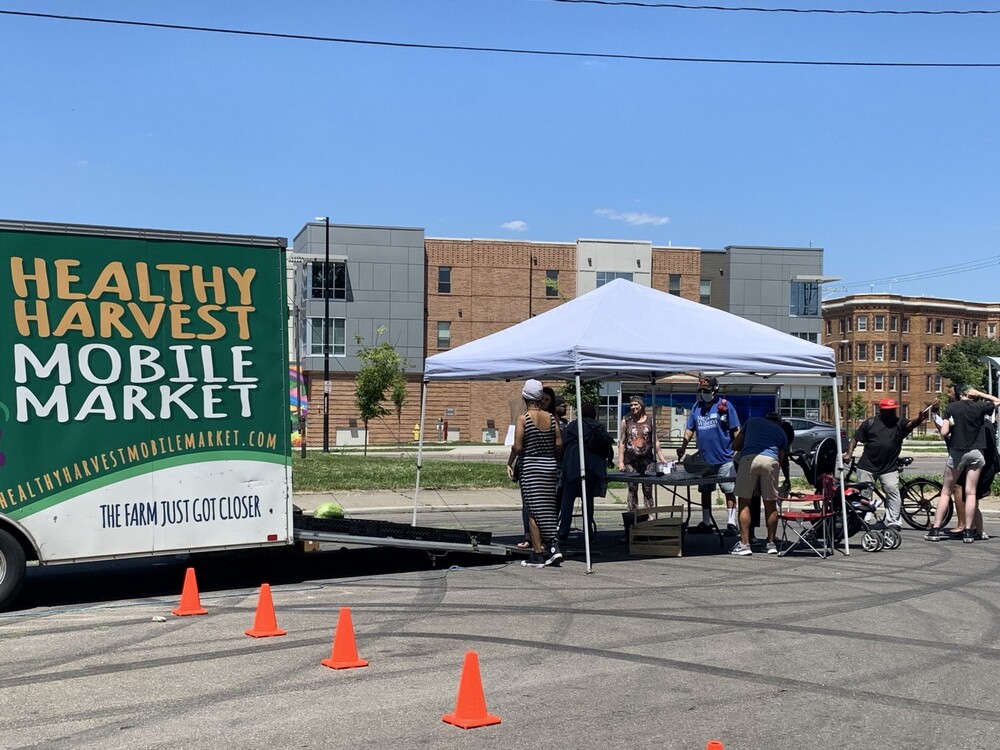Avondale Neighborhood
A neighborhood with a rich Black and Jewish history.

A neighborhood that went from majority Jewish to predominantly African American during the 20th century due to riots and racist real estate practices like redlining and blockbusting.
Early History
The Cincinnati Area was first occupied by prehistoric Adena and Hopewell Cultures. By the early 1720’s, the Shawnee tribe settled in Southern Ohio. After the Revolutionary War, when land begun being sold off to Anglo-Americans, the majority of what would eventually become Avondale was sold, in 1795 to Samuel Robinson by John Cleves Symmes who aquired the land as part of the infamous Miami Purchase. Some of the earliest residences were vernacular wood homesteads. As the area became increasingly more settled, those early humble pioneer wood cabins began to be replaced by elaborate brick residences built for elite white Americans.
Black Life in Nineteenth Century Avondale
Even though it was becoming a majority wealthy, white, suburban village, Avondale had a burgeoning Black population. In October 1847 an African American association known as the United Colored American Association purchased three acres of land for $1,000 to establish the Colored American Cemetery, which was dedicated on May 8, 1848. Another important Black institution, the New Orphan Asylum for Colored Youth, was established in Avondale c. 1866. In 1878, the village census that denoted 241 Black residents in place with just under 2,500 whites.
Around this time, white residents began filing nuisance complaints against Colored American Cemetery. Perpetuated by a fear that the overcrowding in their receiving vaults during the Winter would cause the spread of highly contagious diseases like smallpox, Avondale’s white residents took legal action against the cemetery on the basis of health safety. By 1880, the Colored American Cemetery was forced to close but it took a few years for the bodies of the deceased to be re-interred. By 1883, graves from the Colored American Cemetery began to be relocated to the United American Cemetery (c. 1883), in what would become Madisonville. Unfortunately, when exhuming the bodies, numerous caskets were found to be empty having been victim to grave robbers who stole them for medical research. The specific plat of land that the cemetery used to lay would remain vacant until a heavy stone-faced Romanesque Revival mansion was built by a prominent department store owner, George W. Dittman, in 1894.
Evidenced by the forced displacement of the Colored American Cemetery, racism in Avondale during Reconstruction was omnipresent. During the nineteenth century, African Americans from Avonadale were victimized by a professional medical association. In 1884, an article in a medical journal disclosed that numerous Black Avondale residents were gruesomely murdered by “professional resurrectionists, for the purpose of selling their bodies as material to the Demonstrator of Anatomy of the Ohio College”.
Jewish Beginnings
Along with the small black population, during the nineteenth century, Avondale primarily attracted merchant class white Protestants of German or English ancestry. By the 1890s, affluent German-Jewish families who wanted to move away from the city, yet were not welcomed in the selective social circles suburbs like Clifton began settling in northern parts of Avondale. The desirability of Avonale even brought in well-to-do Jewish families from the West End. In 1896, among a few other wealthier suburban villages, the City of Cincinnati annexed Avondale. These changes allowed the new neighborhood to benefit from the City’s tax base, as well as its police and fire protection.
The expansion of the electric streetcar system into Avondale 1903 enabled moderate income Cincinnatians and European Jewish immigrants to purchase homes in Avondale’s southern suburbs. The number of early twentieth century commercial blocks and high-rise apartment buildings also increased dramatically in the neighborhood. The growing Jewish population prompted the construction of synagouges and temples. For decades to follow, these buildings symbolized the prosperity and permanence of Avondale’s Jewish congregations, however, the inexorable shift of the neighborhood's demographics during the mid-twentieth century quickly transformed Avondale from predominantly white to Black. Between 1948 and 1958, White Flight occurred in Avondale. During this time, the Jewish population dwindled from 6,500 to just 450, while the Black population soared. After World War II, it was clear that African Americans were beginning to supplant Jews in Avondale, which was largely due to racial discrimination.
Racist Real Estate
Still, around this time, becoming a Black homeowner was easier said than done as federal policies, redlining, and blockbusting were all systematic barriers to African American homeownership. Federal policies that came into law after the war, allowed the U.S. government to subsidize Federal Housing Administration mortgages and low-interest Veteran loans to encourage white people to move to the suburbs and openly refused to provide mortgages to Black families hoping to buy homes. Beyond federal policies, redlining and blockbusting were common practices used to exclude Blacks from homeownership. Redlining in Avondale was omnipresent and perpetuated by banks, mortgage companies, and real estate agents who mapped out areas in the city which they deemed unsafe for investment on the bases of race. Specific geographic areas that were unattainable to Blacks were outlined on a map in red. Similarly, blockbusting also furthered segregation and housing discrimination in Avondale as real estate agents would encourage white familes to quickly sell their homes at lower prices by instilling a fear that Black families were moving in, and going to take over their neighborhood. By doing this, real estate agents successfully transformed the neighborhoods demographics with great cost to African Americans who desperately needed housing.
North Avondale Neighborhood Association
By the 1960s, there was a clear division between southern Avondale and the northern part of the neighborhood. North Avondale had bigger, newer, more expensive homes, which attracted middle class Black doctors, lawyers, and other professionals. As the southern part of Avondale was more working class, and almost entirely Black, by the 1960s, the economic disinvestment in the southern area was noticeable and began seeping into northern areas in the neighborhood. In response to the physical and social changes in the community, residents of Avondale formed the North Avondale Neighborhood Association. This interracial group worked to convince white neighbors NOT to panic sell, and became actively involved in preserving the middle class characteristics of the neighborhood. Not only did they fight a rezoning law that would have allowed single family homes to be subdivided into multi-family homes, they also reported illegal conversions. As Avondale became more run-down, the new neighborhood of North Avondale remained wealthy and more exclusive. Since working class Avondale residents didn’t have the resources to enforce such laws, homeowners and renters alike were more likely to experience discriminatory housing practices that left them vulnerable until they were outlawed by the Fair Housing Act of 1968.
Race Riots in Avondale
By 1967, racial tensions in America were at its peak. Within the same year, Avondale experienced race riots and continued disinvestment that was likely the impetus for forced closure of the long-standing Colored Orphans Asylum. The race riots in Avondale started after an African American man named Posteal Laskey Jr., was convicted of murdering a white woman and his cousin, Peter Frakes, picketed the arrest with a sign that read: "Cincinnati Guilty—Laskey Innocent!" Frakes was promptly arrested for “blocking the sidewalk.” In response, Black leaders quickly gathered at the Lincoln Statue on the corner of Reading Road and Rockdale in Avondale to protest. The protest, however, soon became a riot that lasted days, buildings were broken into and over 1000 people were attacked. Soon, the Ohio National Guard was called in to patrol Avondale’s streets with jeeps and machine guns. Over the span of two nights, two people were killed, and over 200 people were arrested. Property damage totalled $3 million in losses, the equivalent of $22 million in today’s money. Still, the coverage in the news was pretty bleak — in the media’s eyes, Avondale was a place of Black violence and destruction. And, just a year later, after the murder of Dr. Martin Luther King Jr., another race riot occurred. By the end of the decade, the series of urban uprisings drove out white businesses, spurring economic disinvestment.
Urban Renewal in Action
Even though the neighborhood was experiencing an economic decline, many children who grew up in Avondale during the 1970s experienced exuberant and independent upbringings directly due to their parent’s desire to move away from the city center in the 1960s and into single-family homes that weren’t attainable to them before white flight hit Avondale in the 1950s. Although many of these families were victims of blockbusting, redlining, and other blatant forms of housing discrimination, they persevered and established a home for their kids who have continued to live in Avondale into adulthood. During the 1970s, the Avondale-Coreyville Renewal Project I enabled the University of Cincinnati hospitals and other medical institutions to grow larger and encroach into existing residential communities. With this urban renewal project came large-scale demolition in Avondale that significantly reduced the neighborhood’s housing stock. In 1971, a second renewal plan, Avondale II, sought to revitalize Reading Road at Rockdale Avenue. Although the original plans didn’t come to fruition, the result was the construction of the Avondale Town Center in 1983.
Avondale Today
Further economic investment in the community didn’t occur until the new I-71 interchange Martin Luther King Jr opened up near the hospitals and medical office buildings in 2017. This nearly $84 million project was a collaboration between the Ohio Department of Transportation, City of Cincinnati, and regional governments that had been in the works since 2013. Not only did the new interstate exit reconfigure how people got on and off I-71, as it added nearly two miles of roadway. Today, the Avondale Community Council, the Avondale Development Corporation, and the Avondale Business Association work as a team to ensure that the institutions investing in Avondale engage with and seek input from local community members before development occurs.
------
Check out the Urban Roots podcast's "Avondale: It Takes a Village" episode on Apple, Spotify, or YouTube to hear Avondale residents share their stories about the neighborhood's past and present!
Images



